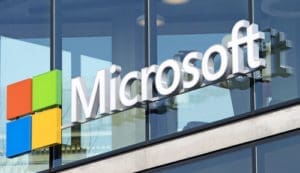 Quick: Name some of the mostly widely used portmanteaus of the past 40 years.
Quick: Name some of the mostly widely used portmanteaus of the past 40 years.
You might think of “Bennifer,” “Brangelina,” and other failed celebrity couples, but did you think of Microsoft? On Jan. 2, 1975, Microsoft co-founders Bill Gates and Paul Allen first referred to their partnership as “Micro-Soft” in a contract with the company MITS, which used Gates and Allen’s version of BASIC in its Altair 8800 computer.
The longtime friends had been working together as Traf-o-Data, a company that tracked and analyzed traffic data (and had another portmanteau name). This led to their interest in microprocessors and software, and when they saw an article in Popular Electronics about the Altair 8800, they decided to pitch their version of BASIC as a software solution to MITS, which desperately needed an easy-to-use programming language for its creation.
It seemed only natural to call their new microprocessor software “Micro-Soft.” (Eventually they dropped the hyphen and the second capital.) The initial contract actually referred to “Paul Allen and Bill Gates doing business as Micro-Soft,” and the software contained the credit line “Micro-Soft BASIC: Bill Gates wrote a lot of stuff; Paul Allen wrote some other stuff.” Microsoft itself wasn’t officially incorporated until 1981.
Other Mircosoft naming options
The other options for a company name are laughable now and were mostly put forward in jest: Outcorporated Inc. and Unlimited Ltd. Taking a nod from IBM, the duo opted not to name their company “Allen & Gates” or “Gates & Allen” so that its name had staying power beyond the lifespan of its founders. Plus, “Micro-Soft” sounded less like a law firm.
Despite the clear staying power of “Microsoft” as a company name, conventional wisdom suggests the company isn’t talented at naming its products. Check out this list of the “10 worst Microsoft product names of all time.”
Tech Time Warp is a weekly feature that looks back at interesting moments and milestones in tech history.
Photo: Paolo Bona/Shutterstock.com

The real success of Microsoft came with the development of Windows, an OS which allowed for the “windowing” of multiple application on a single desktop, hence the name Windows.
With the arrival of Windows 8.0 Microsoft destroyed their brand by eliminating windows on the desktop. The Metro GUI does not provide any form of windowing beyond half a screen for two apps. These windows could no longer be sized or moved as one could in the windows environment of their previous offerings. It was truly amazing to watch a company completely destroy their own brand by forsaking windows as part of their new OS, a capability which named the most famous software of all time. A company who does not know who they are or where they come from truly has no future and the cracks in MS are beginning to really show. I believe there are very few who lament the demise of Microsoft at this point.
There was only reason for the creation of the horrid interface known as the Metro GUI and that was so it could be delivered across the Internet to any Windows device, be it a desktop, tablet or phone. This was a very sad attempt at trying to lend credibility to the windows phone and it failed completely. With the construction of the Azure cloud, Microsoft was attempting to be all things to all devices and again failed miserably. Note that the only thing providers cannot license as a SaaS offering is the Windows desktop OS. Microsoft has kept this for themselves. Almost every other Microsoft product can be acquired from providers (servers and apps) on a per user/per month basis, except Windows. Yes, providers can offer Desktops as a Service, but it is incumbent upon the end user to purchase the full enterprise license for the desktop before this can be implemented. No real SaaS there and impossible for smaller providers to ever compete against when the purveyor of their offerings is also their biggest competition. If that does not sound like a class-action lawsuit waiting to happen, I do not know what is.
Thanks for sharing your thoughts, Adam. We know service providers have some strong opinions about Microsoft – both positive and negative – so it’s interesting to hear your take on where they went wrong. What do you think they could do to get the brand back on track?
This why Bill Gates says “If you can’t make it good, At least make it look good.”